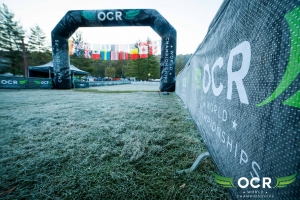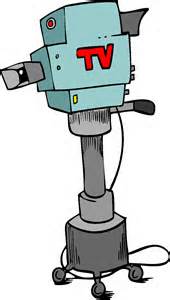
Hard to believe that the sport of obstacle course racing (OCR), as we know it today, is only seven years old in the United States. In the afterglow of the Obstacle Course Racing World Championships (OCRWC) and the upcoming “off-season” for US OCR races, it seems an appropriate time to look at where the sport is right now and what is brewing for 2016…and beyond.
One thing that is very clear…standardization and general cooperation between OCR race promoters is anything but on the horizon. Despite the wildly popular OCRWC with some of the larger OCR developers providing their iconic obstacles and support, most race promoters are going about business as usual. Each has its agenda, setting it's standards and providing its level of safety.
In fact, during the last few weeks and into the next few, there will be at least five “World Championships”…in the US alone! I'm counting the World's Toughest Mudder (WTM) here too. Although their regular events are challenges, not races, WTM is a prize-money, time/distance measured race. More than one championship provides much fodder for arguing who is the best OCR athlete, but doesn't produce one. Elite racers are more likely to attend one championship over another as a result of prize money offered, as opposed to the championship's legitimacy.
IORF – International Obstacle Racing Federation
 At one of the championships there was another surprise… at least to many… a meeting of the International Obstacle Racing Federation (IORF). The IORF has put itself forward as the governing body of OCR worldwide…one of the requirements for becoming an Olympic event by the way. In reality, OCR in the Olympics is likely a decade away… at best… and if ever. However, as both Mary Helen Sprecher and Kelly O'Mara pointed out in their articles, appointing yourself the governing body doesn't make it real. Without the cooperation of all the principal players, it's an empty body with no industry influence.
At one of the championships there was another surprise… at least to many… a meeting of the International Obstacle Racing Federation (IORF). The IORF has put itself forward as the governing body of OCR worldwide…one of the requirements for becoming an Olympic event by the way. In reality, OCR in the Olympics is likely a decade away… at best… and if ever. However, as both Mary Helen Sprecher and Kelly O'Mara pointed out in their articles, appointing yourself the governing body doesn't make it real. Without the cooperation of all the principal players, it's an empty body with no industry influence.
Safety Concerns
 One aspect of the sport that will also come under increasing scrutiny is racer safety. An issue that comes to light from time to time when serious or even fatal incidents occur on the OCR courses. At the moment, each race decides what level of risk is acceptable on the course and individual obstacles. In addition to a potential oversight Federation, the industry may see governmental agencies step in to examine these practices as the sport's popularity grows. They would be much better off to take practical, significant steps as an industry than to have federal, state or (worst yet) each local agency setting rules.
One aspect of the sport that will also come under increasing scrutiny is racer safety. An issue that comes to light from time to time when serious or even fatal incidents occur on the OCR courses. At the moment, each race decides what level of risk is acceptable on the course and individual obstacles. In addition to a potential oversight Federation, the industry may see governmental agencies step in to examine these practices as the sport's popularity grows. They would be much better off to take practical, significant steps as an industry than to have federal, state or (worst yet) each local agency setting rules.
Here again, the OCR industry may be a victim of it's own, cultivated image. OCR began as a test of mental and physical toughness, and this persona has continued to escalate in most of the major races. But just as the NFL has learned a painful lesson as a sport, this cultivation of ignoring pain and even injury may cause a backlash against OCR and certainly would not advance its Olympic prospects, not to mention it's popularity. Most races know which obstacles are causing the most injuries…and how severe. And a racer that chooses to continue in any sport after a serious injury on the course has that right…provided that they do not pose a hazard to others. But as some racers have ‘boasted', continuing a race after being rendered unconscious or even suffering a potential concussion is endangering both the athletes' health as well as the safety of other racers and will not be tolerated by any governing agency.
 Looking Ahead to 2016
Looking Ahead to 2016
2016 will undoubtedly see race promoters continue to scramble for that elusive TV friendly OCR coverage. Except for the BattleFrog College Championships, most of the coverage has been from the Reebok Spartan Race TV relationship resulting in Spartan Race events receiving several hour-long race recaps. However, whatever you may think of these shows as a representative of the OCR experience (I'm not a big fan personally) no one has yet developed a real-time OCR viewing methodology. At least not in the US, although I did hear some promising developments from one of the European OCR race promoters at the OCRWC.
Along these lines, we're also going to see promoters continuing to expand the types of races they offer. Arena races…sprint relay races…team relay races. We'll also see a continuing segmentation in the market as different race contingents demand more races to meet their particular needs, from first-time entry races to the more challenging elite courses. Rumors even talk about the OCRWC offering multi-distance races at the 2016 championships…as we see in track and field.
OCR United
One last development that will be fascinating is the increasing input of the OCR community in shaping this fledgling industry, as the #OCRUnited movement was a factor in the creation…and success…of the OCRWC. OCR racers have been banding together for years now in numerous online communities, primarily on Facebook. Right now, there's no central source for accrediting races….no single, reliable source to ensure the safety or even whether the race is worthwhile to attend. These communities are independently creating feedback systems…one even set up its own program to encourage participation in local/regional races. As these groups evolve, they will influence the OCR industry in many ways, eventually providing some of the over site and de facto accreditation the industry has yet to implement.
To paraphrase a movie line “OCR racers will wake up one day and realize…they are strong”. And that will be a great thing for OCR!!
Related Links:
My Journey to the Center of the (OCR) World – OCR World Championships 2015
Obstacle Racing: The Next Olympic Sport?
Obstacle Races Get a Governing Body — Whether They Want One or Not
International Obstacle Racing Federation
USA Obstacle Racing Association
Disclaimer: The viewpoints expressed by the authors do not necessarily reflect the opinions, viewpoints and official policies of Mud Run Guide LLC, or their staff. The comments posted on this Website are solely the opinions of the posters.




OCR is special because it isn’t standardized. Spartan Race is Spartan Race. Tough Mudder is Tough Mudder. Warrior Dash is Warrior Dash. All are unique despite their apparent similarities. And the athletes who compete in them want them to stay unique. How can you apply standardization to a sport that first is dictated by the terrain of the venue and second by selecting the perfect obstacles to emplace there? I mean, I’ve yet to encounter a set of monkey bars that is the same over 14 races that I’ve completed! Also, 5k races are standardized as are 10k’s, half-marathons, marathons, etc… You know what else they are to the OCR competitor? Boring.
And yes, safety is a concern. It’s a major concern for the event because poor safety will get that company more trouble than they can deal with. Along with people getting hurt or worse. But safety is also something to be assumed by the athletes. Only the most stubborn or idiotic of competitors will continue racing with a serious injury. Why continue going today with an injury that could leave you sitting out most of a racing season when you can tap out, heal, and come back sooner? Admittedly, OCR racers are more “determined” to keep going, after all, that’s what this kind of racing is all about, perseverance. But most of us know when too much is too much. And really, even the most basic of obstacle would be considered pretty dangerous to a vanilla-type runner.
And finally, the idea of a governing body over OCR? Please. The kind of people who do OCR like way it is. The sport is growing. It will continue to grow and more people will come to it at least once. A governing body is just hubris at this point. Someone trying to get in on the money (which currently isn’t much of a profit after all considerations anyway).
Thanks for your feedback John. I agree that a governing body is unlikely anytime soon. For some this body would be a first step towards becoming a recognized sport and/or Olympic sport. Setting standards for becoming an accredited OCR race. Standards meaning basic obstacle design criteria…like engineering and building requirements…not course design and obstacle placement. Although, setting basic ‘rules’ would seem something this body would do as well. Such as whether to require completion of all obstacles, as some races do now, or allow penalties such as burpees to substitute for completion. They would also set basic safety standards. Not just at the design level, but would likely extend to race day medical staffing levels and mandatory racer DQ’s for say, concussions…similar to NFL, college and HS football now. Again, this governing body isn’t going to happen until there is some level of cooperation in the industry. And in 2016 the races will be too busy trying to solidify there niche(s) and/or expand their reach to worry much about that!